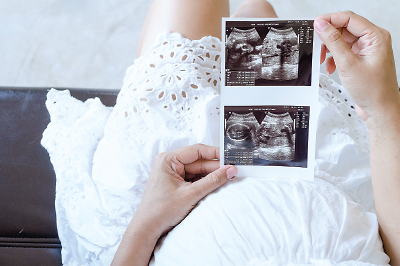The National Institute on Alcohol Abuse and Alcoholism (NIAAA) has released an updated set of guidelines for the diagnosis of fetal alcohol spectrum disorders (FASD). The new guidelines, which expand upon ones issued by NIAAA in 2005, provide for the first time specific cognitive and behavioral domains that need to be assessed as well as specific levels of functional deficit that are needed to qualify for the diagnosis.
The updated guidelines retain the four subtypes of FASD first proposed by the Institute of Medicine in 1996: fetal alcohol syndrome (FAS, which includes facial anomalies, growth defects, and neurobehavioral problems); partial fetal alcohol syndrome (PFAS, which includes facial anomalies and neurobehavioral problems); alcohol-related neurodevelopmental disorder (ARND, neurobehavioral problems in absence of facial or growth anomalies); and alcohol-related birth defects (ARBD, which includes only physical deficits).
Ken Warren, Ph.D., a senior advisor to NIAAA Director George Koob, Ph.D., and co-author of the guidelines, told Psychiatric News that providing more details on these cognitive and behavioral domains was a major goal of the expert panel as it conducted its review.
“Fetal alcohol syndrome was first identified based on the presence of three sentinel facial features, but it’s the neurobehavioral defects that send these children to clinics, where most treatments are behavioral in nature,” he said. “We felt it was important to clearly delineate what physicians should be looking for.”
These are the three neurobehavioral domains that should be assessed:
•
Global cognitive impairment (general conceptual ability or IQ)
•
Nonglobal cognitive deficits (executive functioning, learning impairment, memory impairment, and/or visual-spatial impairment)
•
Behavioral deficits of self-regulation (mood or behavior regulation, attention deficit, and/or impulse control)
Warren noted that while some language is different, the descriptions used for the diagnostic criteria match fairly closely with the DSM-5 criteria for neurobehavioral disorder due to prenatal alcohol exposure (ND-PAE, currently listed as a condition for further study).
“And that was not by accident,” said Warren. “A lot of work was done to develop the ND-PAE category and characterize all the cognitive and behavioral deficits, and we wanted to acknowledge that.”
One major difference beyond the wording, however, involves the category of adaptive functioning, which includes traits such as social communication and daily living skills. This is an important domain for ND-PAE; a positive diagnosis requires deficits in at least two adaptive categories. The NIAAA guidelines, in contrast, include adaptive functioning as a domain that should be assessed, but there are no strict cutoffs for performance.
As Warren explained to Psychiatric News, the panel chose to lean toward more relaxed guidelines to ensure that children with an FASD aren’t overlooked, even if that will incur some false positive diagnoses. “Given the significant deficits in cognition and function that individuals with these disorders have, it’s important to identify them early and get them appropriate services,” he said. “There is no harm in starting an early intervention for someone who may turn out to not have a fetal alcohol disorder, but there is a great potential for harm if a diagnosis is missed.”
The panel also relaxed the criteria related to the facial anomalies associated with fetal alcohol exposure. Under the updated guidelines, children need the presence of only two—instead of all three—sentinel features: a thin vermillion on the upper lip (the border between lip and skin); a smooth philtrum (the cleft in the middle of the upper lip); and short palpebral fissures (the opening between the eyelids).
Carl Bell, M.D., a clinical psychiatrist emeritus at the University of Illinois at Chicago School of Medicine and a staff psychiatrist at Jackson Park Hospital Family Medicine Clinic, commented that the updated guidelines are a positive advancement.
“It’s especially encouraging that these guidelines were not just developed from a literature review, but also empirical observations of over 10,000 children in clinical settings,” he told Psychiatric News.
While these guidelines are geared toward pediatric health professionals (they were published in Pediatrics on August 10), Bell said that all APA members should be knowledgeable about them.
Just as with autism, an FASD does not resolve with the end of childhood and adolescence. Thus, since these disorders have been underrecognized, adult psychiatrists are probably seeing a number of patients who have an FASD, said Bell. He added that the NIAAA could have given more consideration to this fact as the guidelines were being updated.
Warren also acknowledged that missed diagnoses have been an issue, pointing out that the first part of an FASD diagnosis remains the trickiest to confirm—evidence of fetal alcohol exposure.
For the subset of children who display the full range of physical and behavioral deficits, the guidelines allow an FAS diagnosis without documented alcohol exposure. For children who do not reach that threshold, alcohol exposure must be confirmed to make a diagnosis.
“One of NIAAA’s big initiatives moving forward will be research into developing objective biomarkers for alcohol exposure in both blood and tissue,” Warren said, noting that physicians are still dependent on self-reports from patients or surrogates, which are not always reliable.
Bell hopes these guidelines will lead to more research and discussion regarding the social context of FASD, notably its high presence in underserved communities. As the guidelines noted, FASD is a growing public health concern, and the disparities associated with these disorders need to be addressed, he added.
Development of the updated guidelines was funded by grants from the NIAAA with additional support from the Oxnard Foundation. ■
More information about the guidelines can be accessed
here. An abstract of “Updated Clinical Guidelines for Diagnosing Fetal Alcohol Spectrum Disorders” is available
here.

